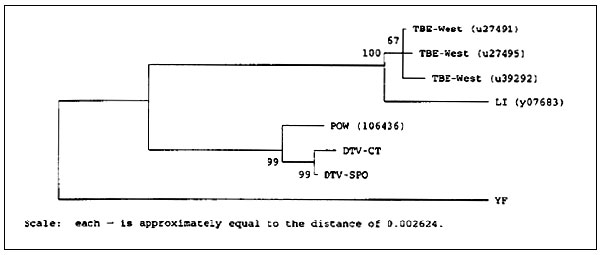Volume 5, Number 4—August 1999
Dispatch
A Focus of Deer Tick Virus Transmission in the Northcentral United States
Figure 1

Figure 1. Phylogenetic relationships among tickborne flaviviruses based on a 376-bp fragment of the ns5 gene. Distance analysis omitting third position nucleotides. Branch numbers are bootstrap confidence estimates on the basis of 500 replicates. GenBank accession numbers in parentheses. LI = Louping Ill; TBE-West = Western subtype tickborne encephalitis (Central European encephalitis); POW = Powassan virus; DTV = deer tick virus.
Page created: December 13, 2010
Page updated: December 13, 2010
Page reviewed: December 13, 2010
The conclusions, findings, and opinions expressed by authors contributing to this journal do not necessarily reflect the official position of the U.S. Department of Health and Human Services, the Public Health Service, the Centers for Disease Control and Prevention, or the authors' affiliated institutions. Use of trade names is for identification only and does not imply endorsement by any of the groups named above.